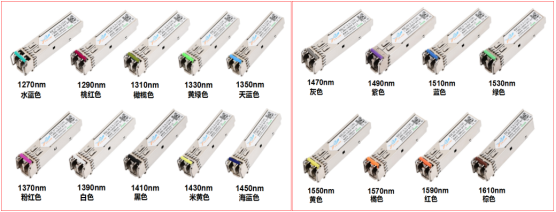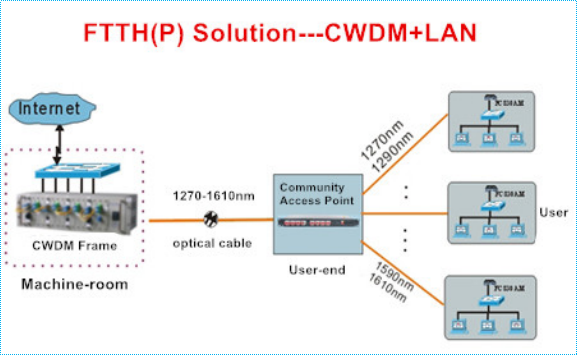According to the packaging optical transceiver can be divided into packages such as GBIC, SFP, XENPAK, SNAP12, X2, XFP, SFP +, QSFP/QSFP+, CFP, CXP etc, according to the transmission rate can be divided into such as 1.25G, 10G and 25G, 40G, 100G,etc., however, what is CWDM optical transceiver?What are the advantages? In what fields?Friends who want to know the answer, ETU-Link invites you to read the following.
What is the CWDM SFP module?
CWDM optical module is a optical fiber modules that combines CWDM technology, can be used with wavelength division multiplex connections, using the principle of wavelength division multiplexer, combining different wavelengths of light signal together and transmitted through a single fiber, at the receiving end uses a wave demultiplexer to decompose the composite optical signal, thus saving fiber resources. Therefore, CWDM optical module is called a low-cost and cost-effective network solution.
What are the standards for CWDM optical modules?
-
RoHS compliant,
-
Meets the IEEE standard 802.3 (gigabit Ethernet 802.3 z,802.3 ah, FastE 802.3 u),
-
Fibre channel physical interface specification FC - PI - 2,
-
Compatible SONET/SDH optical standards,
-
Conforms to the SFP multi-source agreement (MSA).
What are the advantages of CWDM optical modules?
-
Transparent data transmission;
-
Voluminous and make full use of the fiber's huge bandwidth resources;
-
CWDM technology saves fiber resources greatly, effectively reduce construction cost;
-
Network flexibility, stability and reliability;
-
Compatible all-optical network switching and achieve a long distance relay-less transmission;
-
The simplification of laser module that reduce the volume of the equipment, greatly saves floor space;
-
Light layer recovery be independent, which can effectively protect data transmission;
-
Low insertion loss, low polarization dependent loss.
CWDM optical modules are widely used in CATV (cable TV), FTTH (fiber to the home), 1G and 2G fiber channel, MB and gigabit Ethernet, synchronous optical network SONET OC - 3 (155 MBPS), OC - 12 (622 MBPS) and OC - 48 (2.488 Gbps), security and protection system, etc.
ETU-Link can supply various types of CWDM optical modules, with high cost performance and strong stability, which can be 100% compatible with many big brands, such as Cisco, Huawei, H3C, HP, etc. The stability is guaranteed by multiple high quality testing before shipment. ETU-Link can also provide users with system solutions to help users build low-cost, cost-effective and easy to manage network systems.



